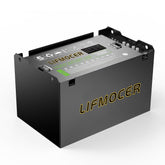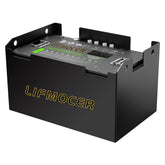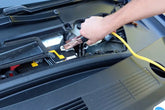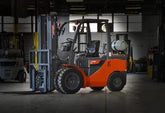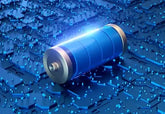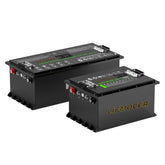How To Extend The Service Life Of Lithium Batteries?
Why Lithium Battery Longevity Matters
Lithium battery, as an indispensable energy carrier in modern society, are reshaping the way of human life at an unprecedented pace. According to the statistics of the International Energy Agency, the global lithium-ion battery market is expected to exceed 250 billion US dollars in 2025, which clearly demonstrates its significance.
However, the issue of battery capacity degradation has always been a crucial bottleneck that restricts the long-term performance of lithium-ion batteries. Research shows that commercial lithium-ion batteries generally experience a capacity degradation of 10% to 20% after 500 to 1000 charge-discharge cycles. This phenomenon has led to a gradual reduction in the driving range of electric vehicles year by year, a continuous decrease in the efficiency of energy storage systems, and a shortened lifespan of consumer electronic products. What is more concerning is that the cost of battery replacement usually accounts for 30% to 50% of the total price of the equipment, which not only imposes a huge economic burden but also causes resource waste and environmental pressure.

In the face of this challenge, scientifically optimizing strategies for battery usage and maintenance has become essential. This article will systematically analyze cutting-edge technologies and practical methods on how to extend the service life of lithium batteries, covering key aspects such as charging management, temperature control, and usage habits, in order to improve energy utilization efficiency and promote sustainable development.
Understand What Shortens Lithium Battery Life
Lithium batteries are reliable and long-lasting, but several common factors can quietly reduce their lifespan if they're not managed properly. One major cause is deep discharging (DoD). Battery University, in its paper How to Prolong Lithium-based Batteries, proposed that when a li ion battery is repeatedly drained to very low levels before recharging, the internal cells experience higher stress, leading to faster degradation over time. Overcharging creates a similar issue - keeping a battery at 100% for long periods generates excess heat and chemical strain that slowly shortens its usable life.
Environmental conditions also play a critical role. Extreme temperatures, whether hot or cold, can reduce both performance and overall health, especially during charging. Another easily overlooked factor is improper storage; leaving lithium batteries fully charged or completely empty for months accelerates capacity loss. By understanding these contributors, you can take smarter steps to avoid unnecessary wear and effectively extend service life of lithium ion batteries.

Practical Ways to Increase Lithium-ion Battery Life
Keep Charge Between 20–80%
One of the easiest ways to extend the service life of lithium batteries is to keep them operating in the 20–80% state of charge range. Lithium cells stay the most stable in this middle zone, where voltage stress is low and the internal structure experiences minimal degradation. Keeping the battery away from both full charge and deep discharge slows SEI layer growth and helps maintain capacity for more cycles.
In real-world scenarios, this principle applies to almost every application - from daily-use electronics to lithium forklift batteries and home energy storage systems. For example, many EV owners set their home chargers to stop at 80% for routine driving and only charge to 100% before long trips. The same habit works just as well for golf cart batteries, solar storage packs, and portable power stations.
Use the Right Charger and Voltage
Using the correct charger is more important than most people realize. A lithium battery is designed for a specific voltage and charge profile, and mismatched chargers can push the cells into overvoltage or undervoltage conditions. Overvoltage accelerates chemical wear and heat buildup, while undervoltage causes incomplete balancing and shortened runtime.
To protect battery health, always use the original charger or a certified replacement with proper voltage and current limits. This ensures stable charging, prevents unnecessary stress, and helps the li ion battery maintain consistent performance across hundreds of cycles.
Avoid Full Discharge Cycles
Although lithium ion batteries can technically handle deep discharges, doing so regularly shortens their lifespan. A shallow-cycle pattern - recharging before the battery drops too low - keeps internal resistance stable and reduces the strain on the battery's anode materials. This is why lithium systems in industrial equipment like forklifts and AGVs perform best when they are opportunity charged throughout the day rather than drained to 0%.
For home energy storage or portable power applications, it's also a good idea to recharge once the level reaches around 25–30%. Keeping the battery within this healthier zone helps preserve long-term stability and capacity.
Maintain Safe Operating Temperatures
Temperature is one of the biggest factors affecting lithium battery service life. The ideal range is typically between 10°C and 30°C (50°F to 86°F), where the cells operate with minimal chemical stress. High temperatures accelerate aging, while extremely low temperatures reduce available power and can trigger lithium plating.
Whenever possible, avoid charging or using lithium batteries in hot car interiors, direct sunlight, or freezing environments. Simple habits-such as charging indoors, improving equipment ventilation, or keeping battery packs shaded-can dramatically improve lifespan.
Store Lithium Batteries Correctly
If you plan to store a lithium battery for weeks or months, maintaining the correct conditions is essential for long-term health. The best storage level is around 40–60% state of charge, which keeps the li ion battery stable without causing unnecessary stress. Storing at 0% risks over-discharge, while long-term storage at 100% accelerates chemical aging.
In addition, try to store the battery in a cool, dry environment away from heat sources. Regularly check the battery every few months and top it up if the voltage drops too low. These simple steps prevent irreversible damage and help the li-ion battery stay ready for future use.

How to Monitor Lithium Battery Health
Check Capacity and Runtime
Capacity loss is the most direct sign that a lithium battery is aging. If your device or equipment no longer runs as long as it used to under the same load, it's usually a sign that the usable capacity has dropped. A healthy lithium battery typically maintains 80% or more of its rated capacity during the majority of its lifespan. When it falls below that threshold, performance issues tend to become noticeable.
The acceptable capacity range varies by industry. For example, lithium forklift batteries are often replaced once capacity drops to around 70%, while consumer electronics may still function efficiently until 60%. For solar home storage systems, many manufacturers set end-of-life at 60–70% capacity. Knowing these benchmarks helps you evaluate when maintenance or replacement is needed.
Track Internal Resistance (IR)
Internal resistance is one of the most important indicators of lithium battery health because it directly affects power output, heat generation, and efficiency. As a battery ages, its IR gradually increases. A sudden spike usually means the cells are stressed or degraded. Higher IR also reduces the battery's ability to supply high current, especially in applications such as EV packs, power tools, and jump starters.
For home-use batteries, IR can often be checked using smart chargers or battery management apps. In industrial environments like forklifts or solar banks, technicians use professional IR meters or built-in BMS diagnostics. A general rule is that if internal resistance doubles compared to the original specification, the li-ion battery is entering late-life stage and may no longer meet performance requirements.
Watch for Abnormal Heat or Swelling
Unusual temperature changes or physical swelling are signs that the battery's internal structure is under stress. Excess heat during normal charging or discharging may indicate internal short circuits, high IR, or cell imbalance. Swelling is an even more serious warning and usually comes from gas buildup caused by chemical breakdown inside the cells.
If you notice the battery getting hotter than usual, producing a burnt smell, swelling, or deforming its casing, stop using it immediately and disconnect it from the charger. These symptoms can escalate into leaks or thermal runaway if ignored. Early detection not only protects the battery system but also reduces safety risks for the user and surrounding equipment.

Common Myths About Lithium Battery Lifespan
-
"Lithium batteries must be fully discharged"
This idea comes from old nickel-based batteries, not lithium. Fully discharging a lithium battery actually speeds up aging and increases internal stress. Modern lithium cells perform best with shallow cycles, ideally staying above 20% to maintain long-term stability. -
"Bigger charger = faster, and that's fine"
A powerful charger doesn't automatically make charging better. Using a charger that delivers more voltage or current than recommended can overheat the battery, accelerate chemical wear, and shorten its service life. Matching the charger to the battery's specifications is always the safer choice. -
"Storing a battery fully charged is safe"
Keeping a lithium battery at 100% for long periods increases voltage stress and accelerates capacity loss. For long-term storage - whether it's for a golf cart, power station, or household backup battery - the safest level is around 40–60% in a cool environment. This helps preserve both performance and lifespan.
When It's Time to Replace the Battery
Even with careful maintenance, lithium ion batteries inevitably degrade over time. Knowing when to replace them is just as important as trying to extend the service life of lithium batteries. One of the first signs is a consistent drop in capacity. If the battery used to power your device or vehicle for several hours but now drains much faster - even after a full charge - it's a strong indicator that the cells are losing their ability to store energy.
Another important clue is a noticeable increase in internal resistance. This often shows up as the battery struggling under load, voltage sagging quicker than before, or devices shutting down unexpectedly even though some charge appears to remain. You may also observe the battery heating up more than usual during charging or normal usage. Excess heat is a classic sign that the chemical structure inside the cells is aging. In severe cases, swelling or deformation of the battery casing can occur - a clear indication that replacement should not be delayed.
While the goal is to maximize longevity, holding onto a failing battery can be more costly in the long run. Reduced performance, unexpected shutdowns, and safety risks can all outweigh the cost of a timely replacement. Identifying these early warning signs allows you to replace the lithium battery before a complete failure disrupts your workflow or leaves you unprepared in critical situations.
FAQs on Lithium Battery Life
How long do lithium batteries typically last?
Most lithium batteries last 2–8 years depending on usage, depth of discharge, temperature, and charging habits. Batteries used with shallow cycles and stable temperatures generally stay healthy much longer.
Do charging cycles really affect lifespan?
Yes. Every full charge cycle slightly wears the battery. More shallow cycles - keeping charge between 20–80% - help extend long-term capacity and reduce internal stress.
Does fast charging reduce battery life?
Fast charging generates more heat, which accelerates chemical aging. Occasional fast charging is fine, but relying on it daily can shorten lifespan, especially in hot environments.
What storage level is best for long-term health?
The ideal storage level is 40–60% with the battery kept in a cool, dry place. Avoid storing at 0% or 100%, as both extremes can degrade capacity over time.
Summary
Lithium batteries have become a cornerstone of modern energy storage, powering everything from electric vehicles to portable devices. Despite their reliability, capacity degradation over time remains a key challenge, affecting performance, efficiency, and costs. Factors such as deep discharging, overcharging, extreme temperatures, and improper storage can quietly shorten battery life, while careful monitoring of capacity, internal resistance, and physical signs like swelling can help detect early warning signals. Understanding these aspects is essential for both safety and long-term efficiency. For anyone looking to maximize performance and reduce replacement costs, learning practical strategies on how to increase lithium ion battery life is a crucial step. Let's join hands and take action. LIFMOCER will join hands with everyone and be driven by the dual wheels of technological innovation and behavioral change to jointly write a new chapter in the efficient utilization of energy and green development.




